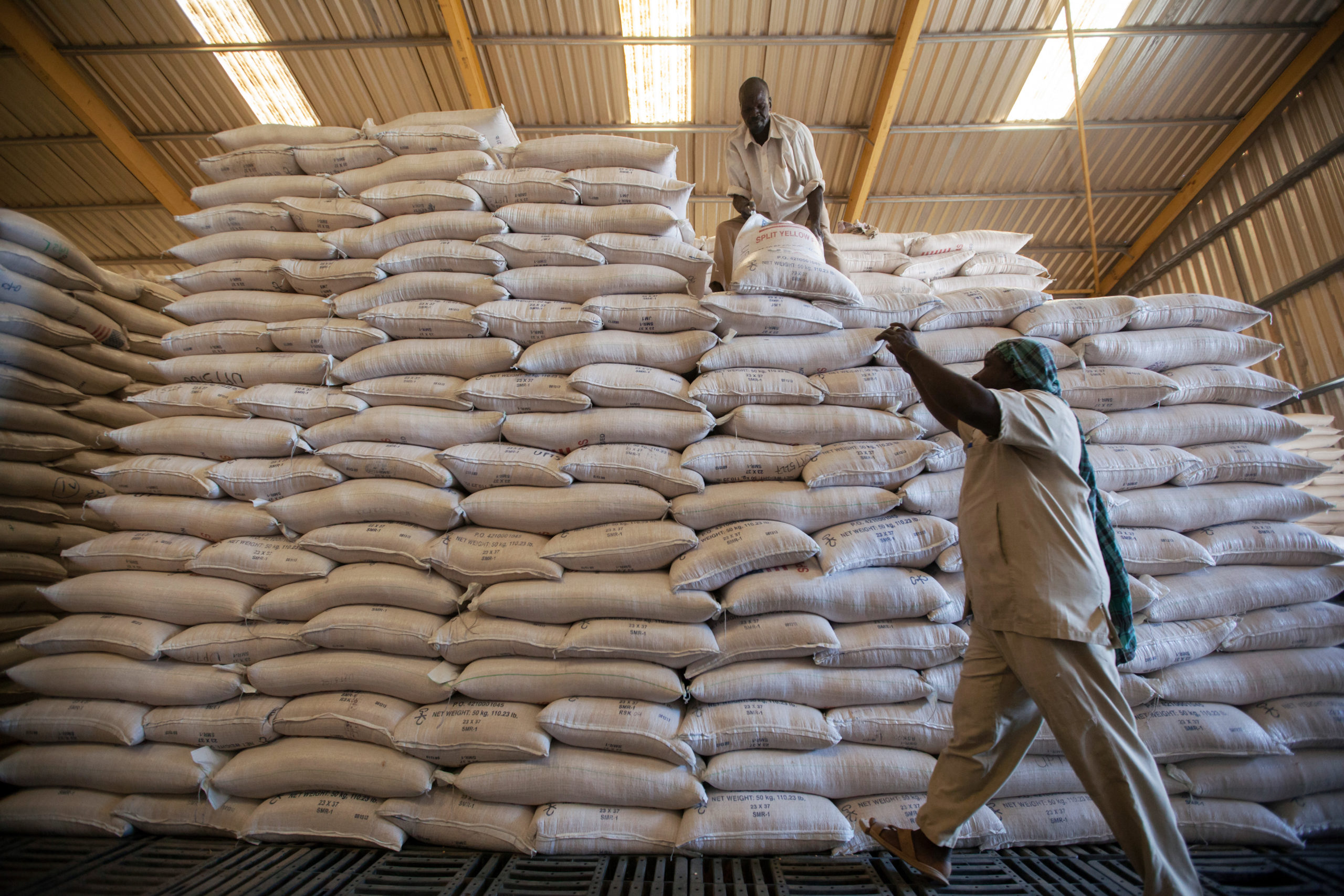Professor Patricia Justino is a leading expert on the links between political violence and economic development. Her work has greatly expanded knowledge about the intersection between poverty, food insecurity, and conflict.
Since the beginning of history, humanity has faced a vicious cycle of hunger and conflict. In their search for secure food supplies, our ancestors fought others for the control of land, crops, and technology that produces food.
At the same time, conflict, wars, and violence are the greatest causes of famines and children’s deaths due to malnutrition.
The Nobel Prize awarded to the World Food Programme (WFP) acknowledges the importance of this age-old challenge and the extraordinary work done by WFP staff to break this vicious cycle in some of the most desperate parts of the world.
People living in war zones face enormous challenges and adopt a mix of legal and illegal, formal and informal activities in order to survive and protect their livelihoods.
This sometimes includes participation in and support for warring factions. Often civilians survive and protect their livelihoods. Ensuring food security can lead to various forms of voluntary and involuntary support for armed groups.
Many join armed groups as a livelihood coping strategy and to secure protection from violence and from hunger, for themselves and their families.
Beyond immediate survival, there is also evidence that food price increases may breed conflict.
Increases in food prices and the hunger and food insecurity they cause may strengthen existing grievances and the potential for civil unrest. Meanwhile, destitution and hunger may reduce the opportunity costs of individuals participating in, joining, or supporting armed factions.
These factors are further aggravated by global uncertainties. For example, climate change, which may exacerbate conflicts across borders and between population groups that depend on agriculture or food trade for their survival.

Violent conflicts kill millions of people across the world, but only a small percentage of such deaths are from direct violence.
Most conflict-related deaths are due to disease, malnutrition, and hunger as conflicts destroy local economies, markets, health systems, and infrastructure and spread destitution and infectious diseases.
Researchers have shown that the effects of violent conflict are devastating and persist across generations.
For example, pregnant women who suffer from malnutrition and stress due to violence give birth to low-weight and low-height children who are disadvantaged from birth. In turn, they will earn less than others as adults, with adverse consequences for their own children.
Children affected by malnutrition in war zones and in refugee camps further lose out on education and learning. Unfortunately, this sets them up for a lifetime of hardship and vulnerability.
There is also evidence that attacks to food crops and livelihoods are used strategically by armed groups to control territories and populations, perpetuating hunger and food insecurity.
One particularly devastating impact of armed conflicts is the deliberate destruction and plundering of crops, property, markets, and assets.
On one hand, it forces the displacement of populations from key areas. On the other hand, it punishes and control civilians that may support opposing factions.
Livestock is an important asset for many rural communities in developing countries. However, during violent conflicts, owning livestock is risky. Livestock are visible assets, easily stolen or killed, that may make households that own them the targets of violence.
In fear of their lives, many households destroy their precious assets, which leads them to further descend into poverty and hunger.
This trade-off between economic and physical survival is part of the daily life of many living in war zones.
The WFP’s humanitarian and disaster-relief programmes have saved countless lives. They’ve also avoided hunger and despair amid terrible violence and food insecurity. One important achievement is the preventive role played by their interventions, often underfunded.
Of course, more can be done to improve the reach and efficacy of many of its programmes. But the WFP have understood that feeding the world’s most vulnerable may well build resilience to conflict by assisting countries and people to cope with and recover from war and violence.
Programmes such as Food Assistance for Assets have provided dignity, jobs, and livelihoods to some of the most vulnerable people in the world.
Ensuring the efficacy of this preventive role – which requires continued support to the WFP and their supporting agencies – is absolutely crucial to avoiding vicious cycles of war and famine.
For these reasons, I applaud the Committee’s decision to award the WFP the Nobel Peace Prize. As the agency announced on Twitter, ‘This is a powerful reminder to the world that peace and #ZeroHunger go hand-in-hand.’
UNU-WIDER originally published this article and was republished on Vision of Humanity under a Creative Commons license.
Professor Patricia Justino is a leading expert on the links between political violence and economic development. Her work has greatly expanded knowledge about the intersection between poverty, food insecurity, and conflict.
The views expressed in this piece are those of the author(s), and do not necessarily reflect the views of the Institute or the United Nations University, nor the programme/project donors.